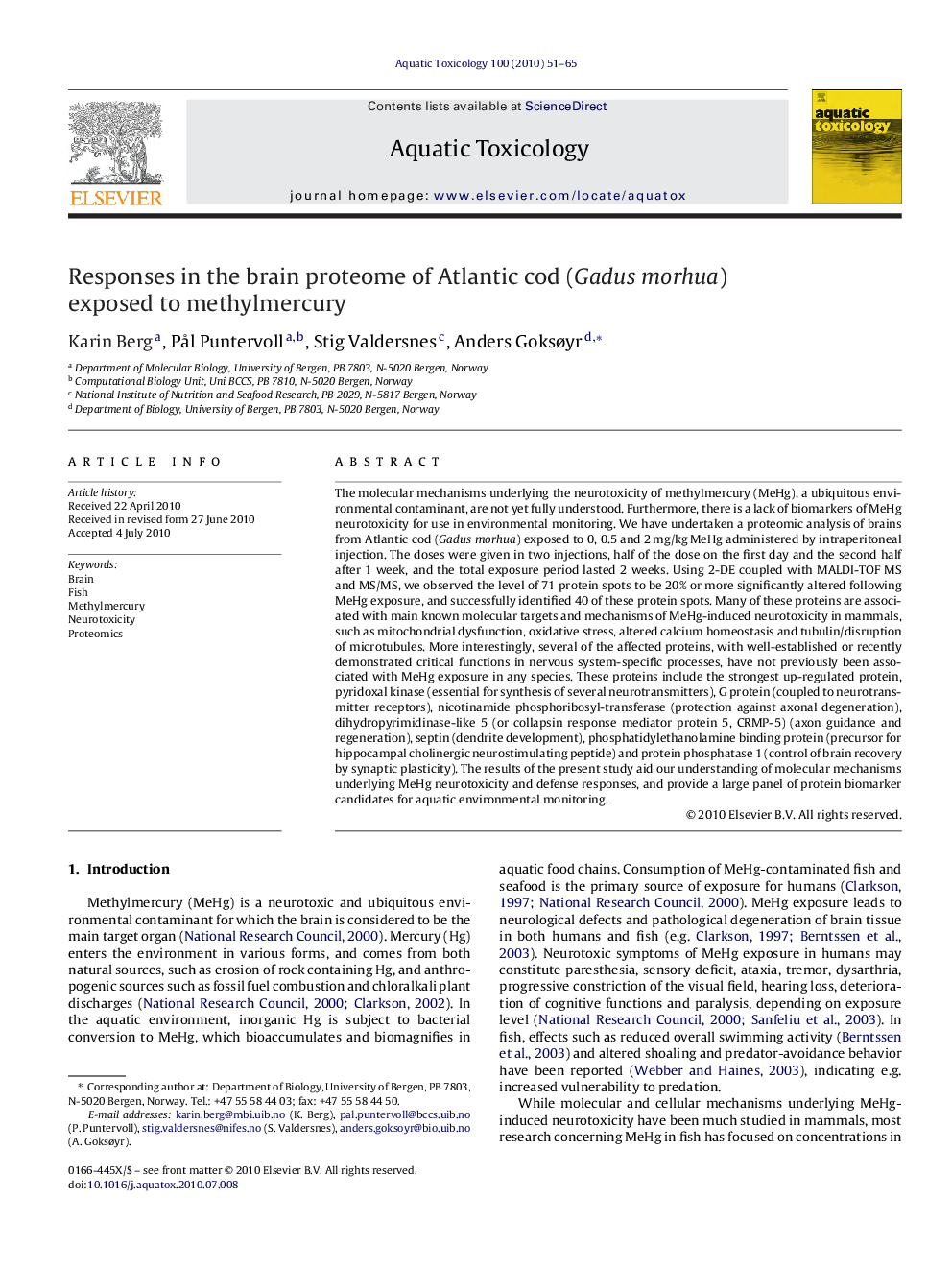| کد مقاله | کد نشریه | سال انتشار | مقاله انگلیسی | نسخه تمام متن |
|---|---|---|---|---|
| 4530131 | 1324683 | 2010 | 15 صفحه PDF | دانلود رایگان |

The molecular mechanisms underlying the neurotoxicity of methylmercury (MeHg), a ubiquitous environmental contaminant, are not yet fully understood. Furthermore, there is a lack of biomarkers of MeHg neurotoxicity for use in environmental monitoring. We have undertaken a proteomic analysis of brains from Atlantic cod (Gadus morhua) exposed to 0, 0.5 and 2 mg/kg MeHg administered by intraperitoneal injection. The doses were given in two injections, half of the dose on the first day and the second half after 1 week, and the total exposure period lasted 2 weeks. Using 2-DE coupled with MALDI-TOF MS and MS/MS, we observed the level of 71 protein spots to be 20% or more significantly altered following MeHg exposure, and successfully identified 40 of these protein spots. Many of these proteins are associated with main known molecular targets and mechanisms of MeHg-induced neurotoxicity in mammals, such as mitochondrial dysfunction, oxidative stress, altered calcium homeostasis and tubulin/disruption of microtubules. More interestingly, several of the affected proteins, with well-established or recently demonstrated critical functions in nervous system-specific processes, have not previously been associated with MeHg exposure in any species. These proteins include the strongest up-regulated protein, pyridoxal kinase (essential for synthesis of several neurotransmitters), G protein (coupled to neurotransmitter receptors), nicotinamide phosphoribosyl-transferase (protection against axonal degeneration), dihydropyrimidinase-like 5 (or collapsin response mediator protein 5, CRMP-5) (axon guidance and regeneration), septin (dendrite development), phosphatidylethanolamine binding protein (precursor for hippocampal cholinergic neurostimulating peptide) and protein phosphatase 1 (control of brain recovery by synaptic plasticity). The results of the present study aid our understanding of molecular mechanisms underlying MeHg neurotoxicity and defense responses, and provide a large panel of protein biomarker candidates for aquatic environmental monitoring.
Journal: Aquatic Toxicology - Volume 100, Issue 1, 1 October 2010, Pages 51–65